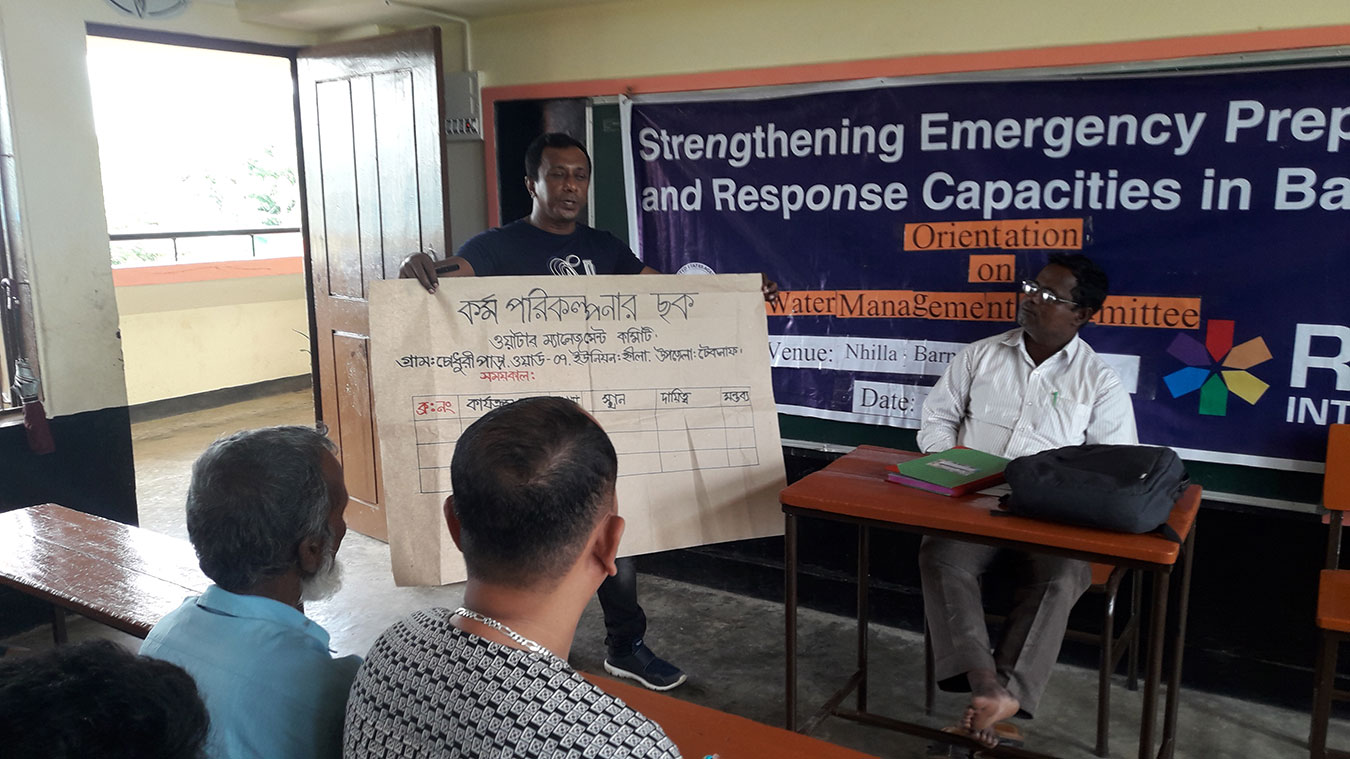Bangladesh is one of the most disaster-prone countries in the world, experiencing recurring flooding, landslides, and cyclones, which have increased in frequency and severity in recent years.
Miles of uninterrupted coastline are one of Bangladesh’s top natural wonders – and its greatest source of vulnerability. Coastal communities are routinely exposed to devastating natural disasters, particularly during the country’s two cyclone seasons each year, with the greatest majority of storms arriving in May and October. In low-lying areas of the country, the effects of these cyclones are further intensified by storm surges, which are the leading cause of death during a cyclone.
While many international aid organizations are conducting disaster risk reduction and emergency preparedness activities for Bangladesh’s burgeoning Rohingya refugee population in Kutupalong refugee camp, few are providing similar opportunities to members of the local Bangladeshi host communities.
With support from USAID’s Office of Foreign Disaster Assistance, Relief International teams are expanding the scope of emergency preparedness activities to communities in Teknaf Upazilla, a subdistrict of Cox’s Bazar located along the mainland’s southernmost point. The year-long program aims to strengthen early warning systems, emergency preparedness, risk mitigation, and prevention mechanisms in four of Teknaf Upazilla’s most highly populated wards.
Over the course of this program, our teams work alongside local community members to identify risk factors that may exacerbate existing vulnerabilities in their communities during the country’s upcoming cyclone season. Among the top vulnerabilities, community members noted that:
- Households are located in low-lying coastal areas prone to landslides and floods;
- Responders have a limited amount of response equipment, including ropes, chainsaws, and other materials used to clear debris;
- Communities’ access to sources of safe drinking water and drainage systems in the event of an evacuation is extremely limited;
- A lack of coordination between disaster management committees at the ward and village levels
From these risk assessments, community members developed emergency preparedness plans to identify key community resources and evacuation routes. They also designated responsibilities for community leaders and volunteers before and after a disaster.
In addition to these activities, Relief International is strengthening existing Cyclone Preparedness Units to ensure sustainability by providing refresher training courses and new equipment for volunteers. These trainings cover basic first aid and psychological care, search and rescue, and seminars on disaster risk reduction concepts.
At local evacuation sites, Relief International teams have identified 25 water points in high-risk areas that will be rehabilitated in the coming months. Our teams are also prepositioning supplies and distributing hygiene kits to 2,000 families across the four wards. Cash-for-work programming has been incorporated to support a number of small scale community-identified measures, including drainage clean-up and tree planting in landslide-prone areas to improve the physical landscape and support livelihoods. These activities are being undertaken in coordination with widespread awareness campaigns promoting hygiene best practices in an effort to reduce the water contamination and disease outbreaks that often accompany natural disasters.

